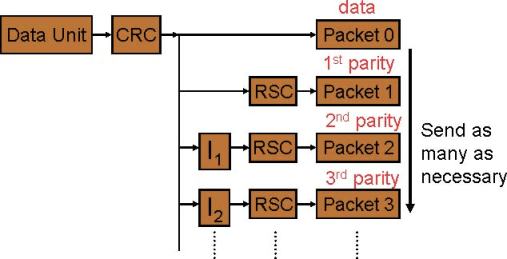This research was carried out at Microsoft Research Labs in the summer of 2001. It addresses the problem of streaming packetized media over a lossy packet network to a wireless client, in a rate-distortion optimized way. We introduce an incremental redundancy (IR) transmission scheme that combats the effects of both packet loss and bit errors in an end-to-end fashion, without support from the underlying network or from an intermediate base station. The scheme inserts unequal amounts of redundancy at the application layer, exploiting the ability of the client to observe corrupted payloads. Using this scheme, the server can incrementally increase the amount of transmitted redundancy (see Figure 1) in response to negative acknowledgements fed back from the client. The IR transmission scheme is combined with a rate-distortion optimization framework that enables the sender to compute which packets it should send, out of all the packets it could send at a given transmission opportunity, in order to meet an average rate constraint while minimizing the average end-to-end distortion. Substantial performance gains are registered over systems that are not rate-distortion optimized, at bit error rates as large as 10-2.

Figure 1. The Incremental Redundancy transmission scheme.
This project was carried out at Microsoft Research, Redmond, WA where I spent the summer of 2001 as a visiting researcher in the Communication and Collaboration Systems group.